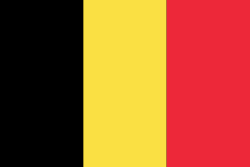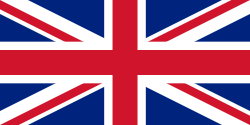Hello everyone, Leïla here to discuss a topic that is particularly close to my heart: upcycling in textiles and how to recover and give new life to our textiles that are lying dormant at the back of the workshop.
In this article, I discuss our collaboration with Rapièce, but this is not the first one. I have included links to specific articles covering our other collaborations.
In recent years, the fashion industry has been facing a double crisis: massive overproduction generating mountains of textile waste, and consumers who are increasingly aware of the environmental impact of their purchases (European Environment Agency, 2022). In this context, upcycling has emerged as a real trend. Through inspiring examples, unique handmade pieces and a circular system-based approach, this movement demonstrates that it is possible to transform old clothes, unused materials and fabric scraps into desirable products.

At Inkoo, we decided to go beyond theory by collaborating with several passionate local designers:
- Agathe from Rapièce, who transforms our flawed merchandise into unique, one-of-a-kind pieces.
- Lucie from Wabi Sabi, which elevates forgotten materials through its expertise,
- and Camille, “La Fille de la Marquise”, which combines fashion and sustainability in designs with a strong identity.
Thanks to these partnerships, we are giving our forgotten textiles a new lease of life and proving that with a little creativity, nothing is lost, everything is transformed.
Understanding textile upcycling
Definition and differences from recycling
Upcycling is a process that involves giving clothing, items or objects a second life by transforming them without destroying the material. Unlike recycling, which often involves reducing materials to fibres or raw materials to create new products, upcycling preserves the original structure. For example, a tote bag can be created from old fabrics or cutting scraps or unused roll ends. We don't destroy, we reinvent.
Benefits for brands and creativity
For fashion brands and businesses, upcycling is more than just a trend: it is a way to combine quality, innovation and respect for the environment. Upcycled items are unique, which adds value in terms of image. What's more, showcasing a designer who transforms waste into desirable clothing helps strengthen the bond with consumers, who are increasingly sensitive to the environmental impact of the textile industry.

The environmental impact of textile upcycling
Waste reduction and circular economy
Every year, the fashion industry generates millions of tonnes of textile waste: unsold clothing, fabric scraps, damaged products. By giving these materials a new use, upcycling reduces waste and is part of a closed-loop model. Instead of producing from new resources, we make use of what already exists. Nothing is wasted: a poorly printed sweatshirt can be turned into a cushion, an original creation, or even cut up to make new products.
A more sustainable solution than conventional recycling
Recycling remains useful, but it often requires energy and high resource consumption to transform fibres. Upcycling, on the other hand, is a lighter and more creative approach: it extends the life of existing garments by limiting additional production. It is a concrete way to reduce fashion's footprint on the planet, while stimulating creativity through inspiring examples of transformation.
To learn more, read our article "Circular economy and textile merch: practices and innovations."
Our collaboration with Rapièce: giving forgotten merchandise a second life
Why we chose upcycling
At Inkoo, we produce customised clothing for companies and events. But sometimes, certain textiles do not pass validation: flawed logos, misaligned prints, materials damaged during marking. These items, still in perfect condition, ended up forgotten in a storage facility. Unstitching or repairing them required too much time and expertise. Throwing them away would have been wasteful, so we chose another path: upcycling.
How Agathe (Rapièce) transforms our textiles into unique pieces
We entrusted these products to Agathe, the designer behind Rapièce, a workshop specialising in fabric reuse and creative transformation. With her craftsmanship and handiwork, she breathes new life into our sweatshirts, T-shirts and accessories by creating original new pieces. This process perfectly embodies the circular economy: old textiles are transformed into desirable garments, proudly worn by new consumers.
A win-win collaboration for visibility and sustainability
This partnership works in several ways:
- For Inkoo, it enables us to reduce our waste and remain consistent with our sustainability values.
- For Rapièce, it is a valuable collection of quality materials, provided free of charge, which fuel his creative process.
- For both parties, it's an exchange of visibility: we talk about her work, she promotes our upcycled clothing on social media.
In practice, it is a wonderful way to show that even production ‘failures’ can find a second lease of life and contribute to a more environmentally friendly world.

What about tomorrow? The future of upcycling in merch
Upcycling as a driver of innovation for businesses
More and more brands and companies are exploring upcycling not only as an environmentally friendly solution, but also as a process of innovation. By integrating textile upcycling into their fashion or merchandising strategies, they are creating more desirable products with high perceived value and avoiding overconsumption.
How brands can easily get started
Upcycling does not necessarily require huge resources: it can start with an internal collection of scraps, unused rolls or old stock. Collaborating with a local designer, a workshop, or even raising awareness among your internal teams are already concrete examples of reuse. Through these initiatives, companies are showing that they are doing their part for sustainability and positive environmental impact by giving a second life to clothing that would otherwise have become waste.
Conclusion
Upcycling is more than just a trend: it is a quiet revolution that is transforming the way the textile industry views its products, resources and impact on the planet. By giving existing materials a new purpose, we reduce waste, support this system of reuse and stimulate creativity. Our collaboration with Rapièce perfectly illustrates this philosophy: by transforming forgotten items, we show that in sustainable fashion, nothing is lost, everything is recreated.



Eco-friendly textile upcycling: the latest sustainable trend